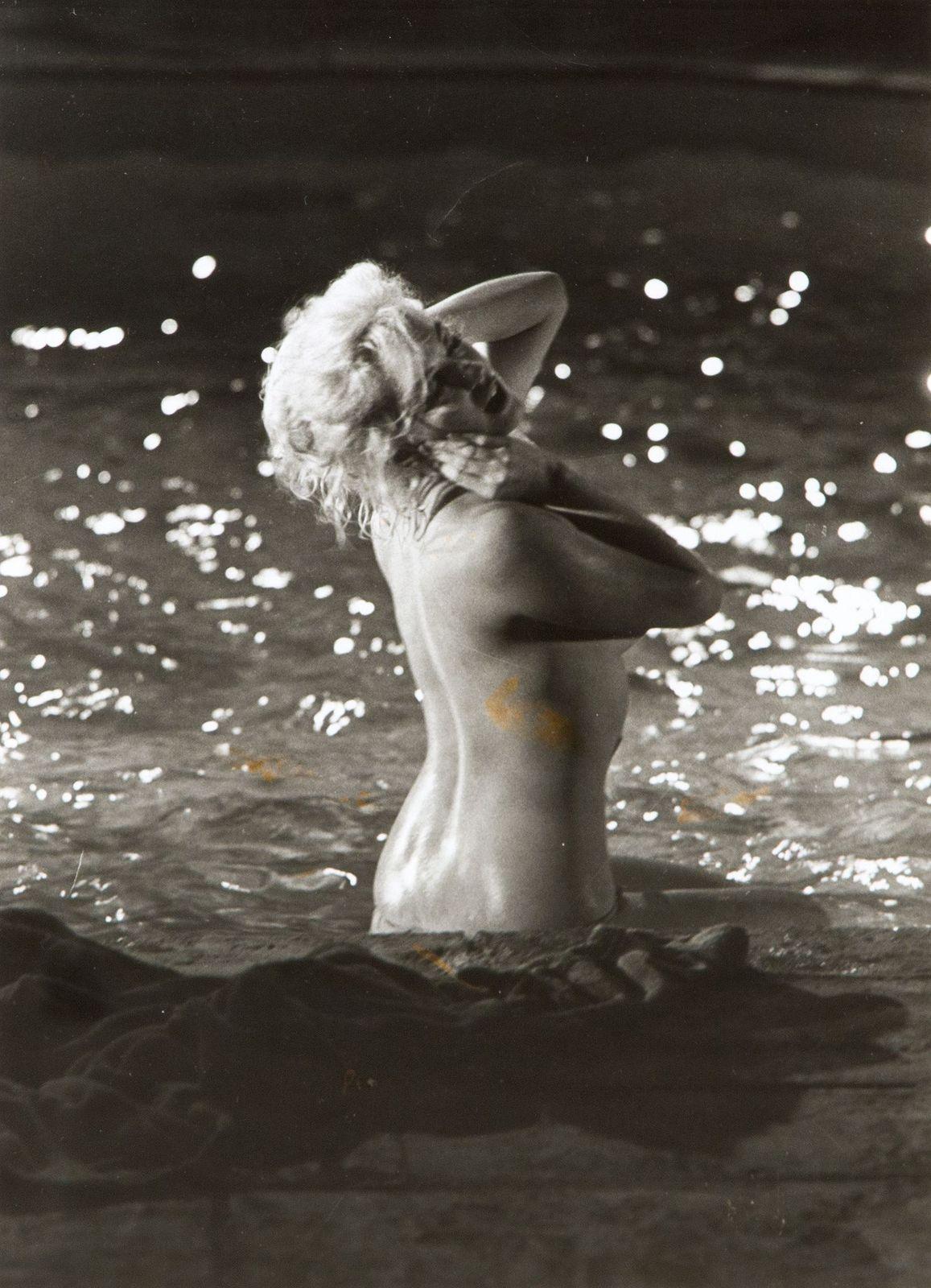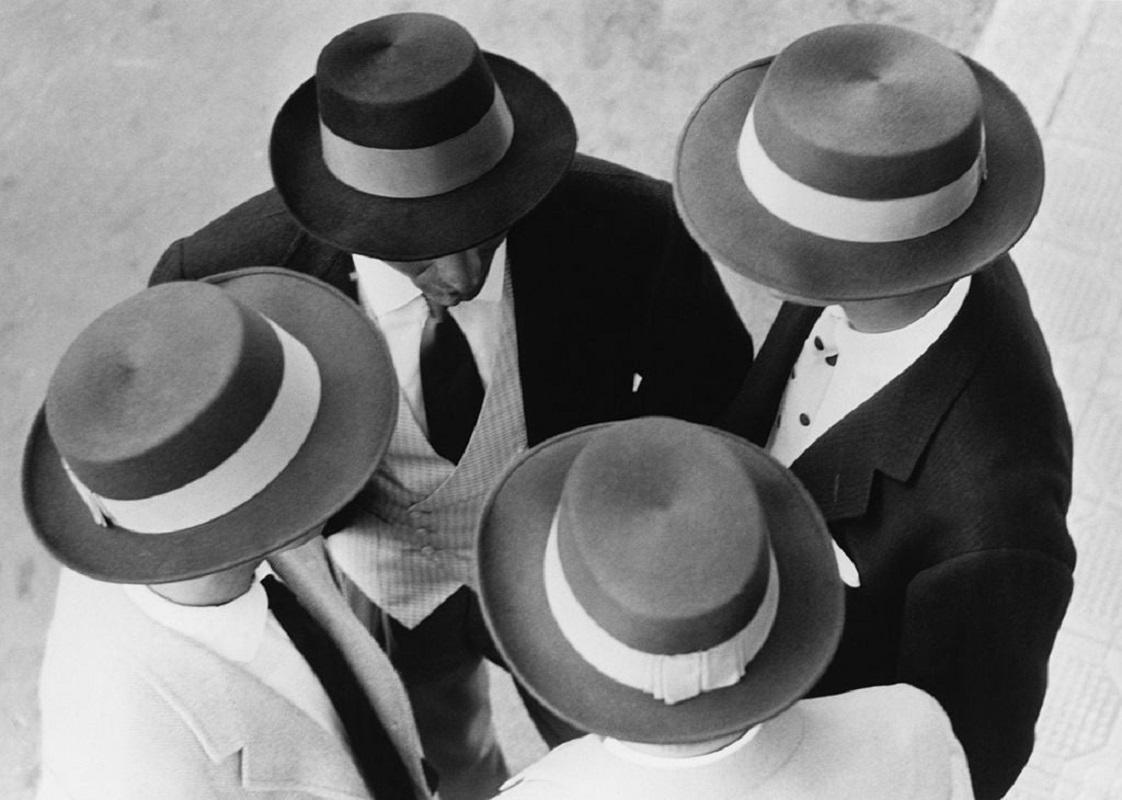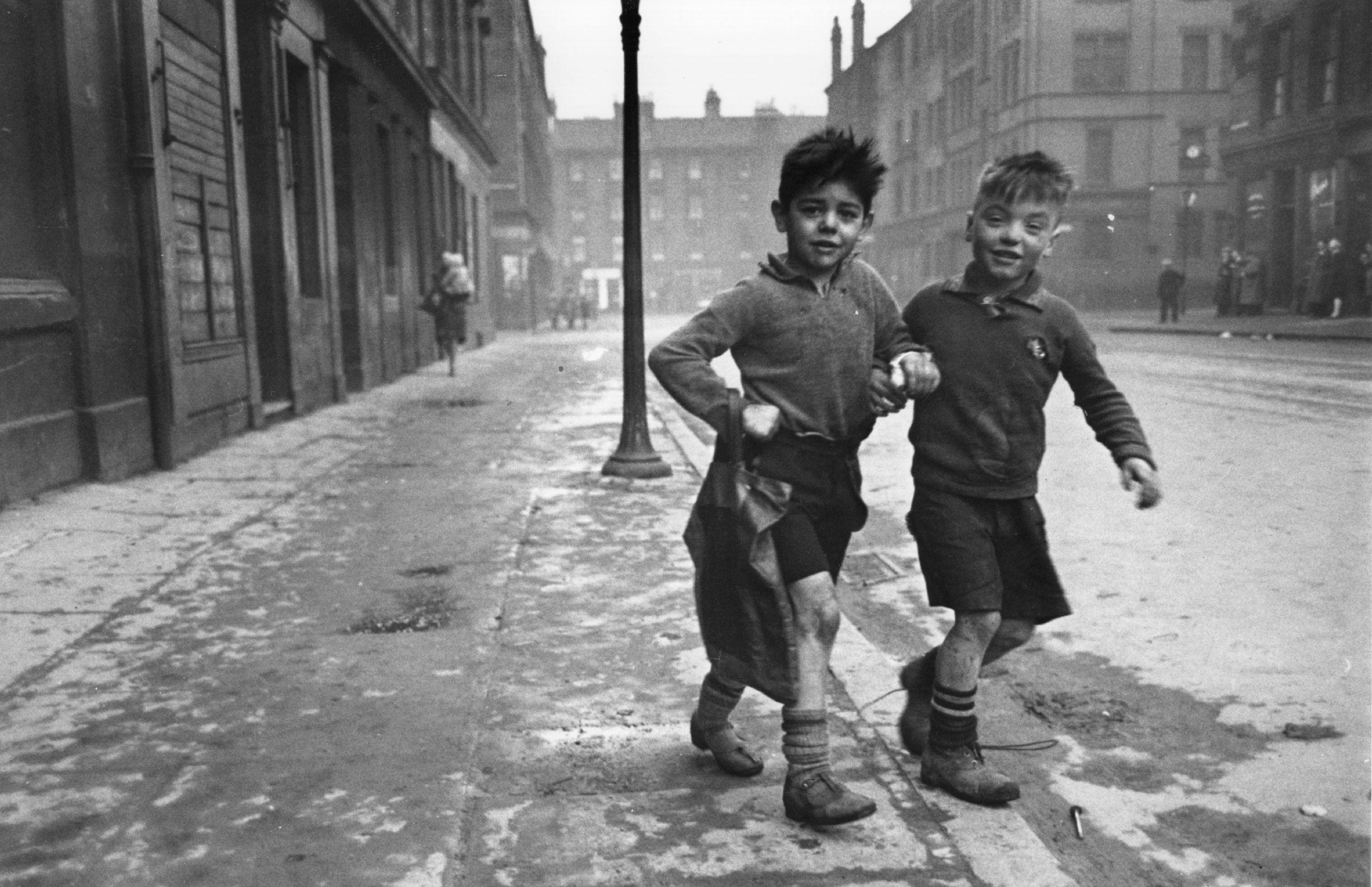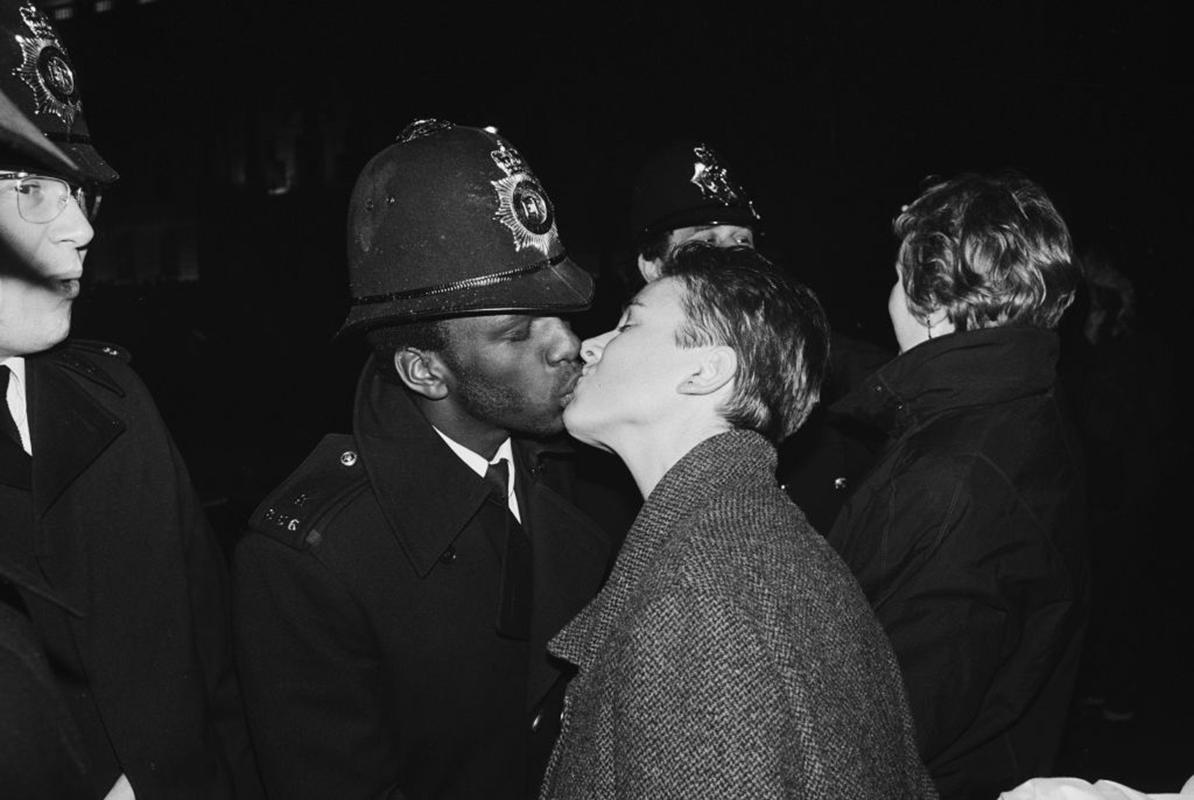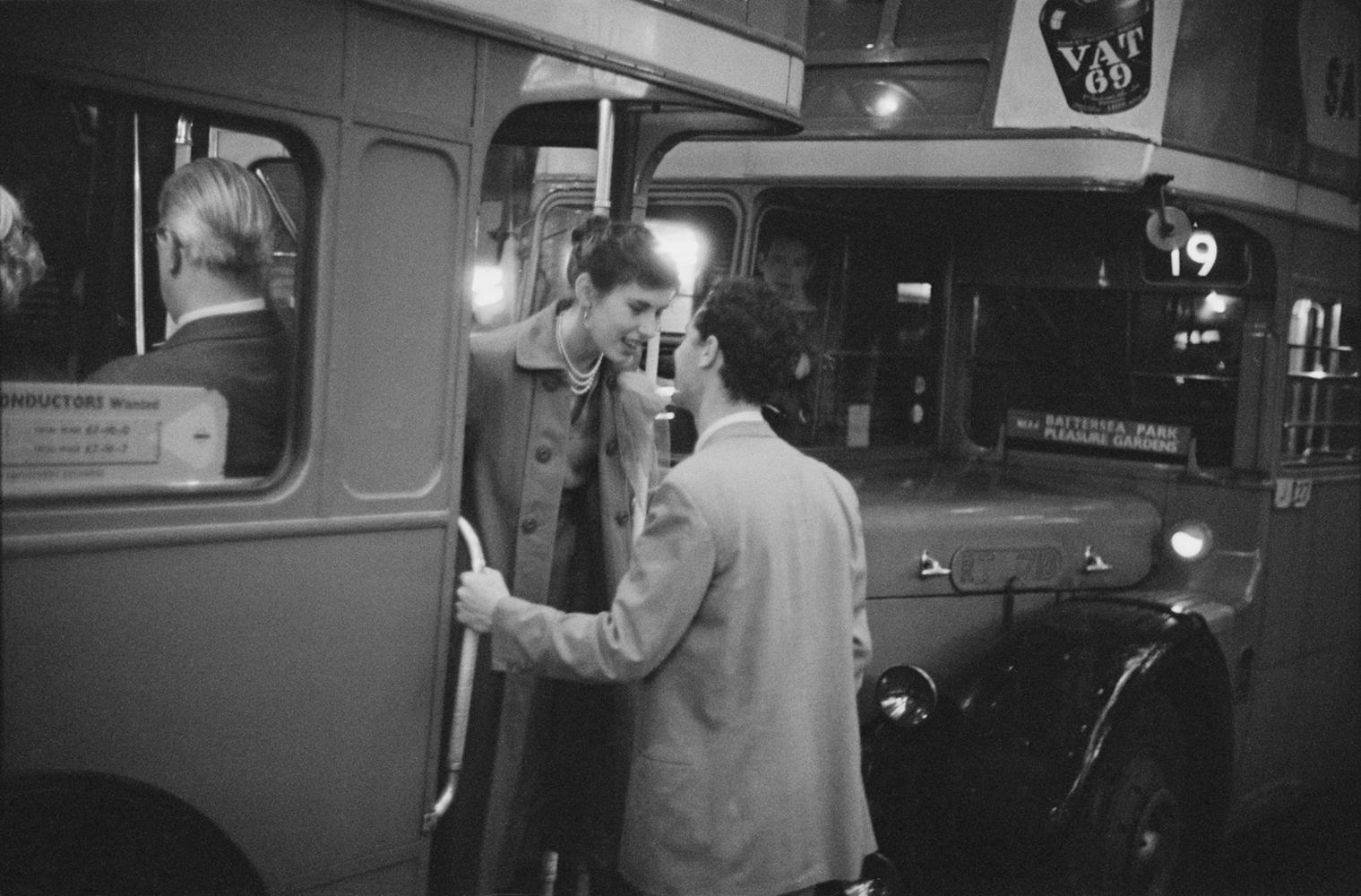Items Similar to Robert Kennedy, San Diego
Want more images or videos?
Request additional images or videos from the seller
1 of 6
SCHILLER, LAWRENCERobert Kennedy, San Diego1968
1968
About the Item
A photograph by Lawrence Schiller. “Robert Kennedy, San Diego” is a figurative photograph, vintage silver gelatin photograph in black and white by American artist Lawrence Schiller. The artwork is signed on the verso.
Lawrence Schiller only remembers the 60s in this way: Fast. As in: Blur. Which is, for those who lived through it, as accurate a description as one is likely to find about the decade that began with optimism and ended in chaos. It was ten years of turmoil and exploration. And through this turbulent and tumultuous decade, it often seemed that whenever a headline-making news event occurred, Lawrence Schiller was there. Schiller was not just lucky to be in the right place at the right time; he was prescient. He was there to cover the event, to add to it, to help us see it, to aid its meaning and its depth. "It was a time in which things happened awfully fast," Schiller says of the decade. "It was a wild, wild period; an uncontrolled period. I don’t think you had any sense of perspective in the 60s. You had to wait and look back at it, because it was a period in which things were happening that had no rhyme or reason to it. But by the end of the ‘60s I had covered so many stories, had so many magazine covers, I had somehow become part of that decade’s history. And I already had my eye on the future."
When Lawrence Schiller got the assignment from the French magazine, Paris Match to photograph Marilyn Monroe on the 20th Century Fox set of Something’s Got to Give, he thought nothing of it. It wasn’t to be a private, studio shoot. He wasn’t going to set up lights, create backgrounds, or use a tripod. Just another assignment, he figured. Monroe by then was firmly established as a figment in the imagination of most young men. The orphan Norma Jean had recreated herself as the blonde bombshell Marilyn Monroe. She’d appeared in twenty-nine films by the time Schiller photographed her in black and white and color in May, 1962. The world was unprepared for the moment when Marilyn jumped in the swimming pool in a flesh-colored bikini and came up out of the water au natural. She was all smiles and in her element: the sex goddess posing for eternity. The film crew brought out a birthday cake on June 1, 1962, when she turned 36, and she gleefully sat before the sparkler candles as Schiller captured the moment- her last day on a movie set. Two months later she would be dead. Accidental overdose, suicide, or murder? We’ll never know. But what we do know is that she welcomed Schiller’s camera, and once again in the photographer’s life, he was in the right place at the right time.
Provenance:
Heather James Fine Art
- Creator:SCHILLER, LAWRENCE
- Creation Year:1968
- Dimensions:Height: 11 in (27.94 cm)Width: 14 in (35.56 cm)
- Medium:
- Movement & Style:
- Period:
- Condition:
- Gallery Location:Palm Desert, CA
- Reference Number:
About the Seller
4.8
Recognized Seller
These prestigious sellers are industry leaders and represent the highest echelon for item quality and design.
Established in 1996
1stDibs seller since 2011
102 sales on 1stDibs
Typical response time: 6 hours
- ShippingRetrieving quote...Ships From: Palm Desert, CA
- Return PolicyA return for this item may be initiated within 7 days of delivery.
More From This SellerView All
- Marilyn MonroeLocated in Palm Desert, CAA photograph by Lawrence Schiller. ""Marilyn Monroe"" is a nude, figurative vintage silver gelatin photograph in black and white by American Post-War artist Lawrence Schiller. Lawrence Schiller only remembers the 60s in this way: Fast. As in: Blur. Which is, for those who lived through it, as accurate a description as one is likely to find about the decade that began with optimism and ended in chaos. It was ten years of turmoil and exploration. And through this turbulent and tumultuous decade, it often seemed that whenever a headline-making news event occurred, Lawrence Schiller was there. Schiller was not just lucky to be in the right place at the right time; he was prescient. He was there to cover the event, to add to it, to help us see it, to aid its meaning and its depth. ""It was a time in which things happened awfully fast,"" Schiller says of the decade. ""It was a wild, wild period; an uncontrolled period. I don’t think you had any sense of perspective in the 60s. You had to wait and look back at it, because it was a period in which things were happening that had no rhyme or reason to it. But by the end of the ‘60s I had covered so many stories, had so many magazine covers, I had somehow become part of that decade’s history. And I already had my eye on the future."" When Lawrence Schiller got the assignment from the French magazine, Paris Match to photograph Marilyn Monroe on the 20th Century Fox set of Something’s Got to Give, he thought nothing of it. It wasn’t to be a private, studio shoot. He wasn’t going to set up lights, create backgrounds, or use a tripod. Just another assignment, he figured. Monroe by then was firmly established as a figment in the imagination of most young men. The orphan Norma Jean had recreated herself as the blonde bombshell Marilyn Monroe. She’d appeared in twenty-nine films by the time Schiller photographed her in black and white and color in May, 1962. The world was unprepared for the moment when Marilyn jumped in the swimming pool in a flesh-colored bikini and came up out of the water au natural. She was all smiles and in her element: the sex goddess...Category
Mid-20th Century Post-War Black and White Photography
MaterialsSilver Gelatin
- Grace Jones and Steve RubellBy Andy WarholLocated in Palm Desert, CAA photograph by Andy Warhol. "Grace Jones and Steve Rubell" is a Post-War silver gelatin print by American Pop Artist Andy Warhol. The artwork is unsigne...Category
Late 20th Century Pop Art Figurative Photography
MaterialsSilver Gelatin
- Jon Gould and Andy WarholLocated in Palm Desert, CAA photograph by Andy Warhol. “Jon Gould and Andy Warhol” is a silver gelatin print by American Pop Artist Andy Warhol. The artwork is numbered FL06.00463 and...Category
Late 20th Century Pop Art Figurative Photography
MaterialsSilver Gelatin
- Andy Warhol and Janice DickensonLocated in Palm Desert, CAA photograph by Andy Warhol. “Andy Warhol and Janice Dickenson” is a silver gelatin print by American Pop Artist Andy Warhol. The artwork is numbered AWL254 by the Andy Warhol Founda...Category
Late 20th Century Pop Art Figurative Photography
MaterialsSilver Gelatin
- Farrah Fawcett Photo ShootBy Andy WarholLocated in Palm Desert, CAA set of two photographs by Andy Warhol. “Farrah Fawcett Photo Shoot” is a set of two silver gelatin prints by American Pop Artist Andy Warhol. The artw...Category
Late 20th Century Pop Art Black and White Photography
MaterialsSilver Gelatin
- Barbra Streisand (fur hat)Located in Palm Desert, CAA photograph by Lawrence Schiller. “Barbra Streisand (fur hat)” is a figurative photograph, vintage silver gelatin photograph in black and white by American artist Lawrence Schiller. The artwork is signed on the verso. Lawrence Schiller only remembers the 60s in this way: Fast. As in: Blur. Which is, for those who lived through it, as accurate a description as one is likely to find about the decade that began with optimism and ended in chaos. It was ten years of turmoil and exploration. And through this turbulent and tumultuous decade, it often seemed that whenever a headline-making news event occurred, Lawrence Schiller was there. Schiller was not just lucky to be in the right place at the right time; he was prescient. He was there to cover the event, to add to it, to help us see it, to aid its meaning and its depth. "It was a time in which things happened awfully fast," Schiller says of the decade. "It was a wild, wild period; an uncontrolled period. I don’t think you had any sense of perspective in the 60s. You had to wait and look back at it, because it was a period in which things were happening that had no rhyme or reason to it. But by the end of the ‘60s I had covered so many stories, had so many magazine covers, I had somehow become part of that decade’s history. And I already had my eye on the future." When Lawrence Schiller got the assignment from the French magazine, Paris Match to photograph Marilyn Monroe on the 20th Century Fox set of Something’s Got to Give, he thought nothing of it. It wasn’t to be a private, studio shoot. He wasn’t going to set up lights, create backgrounds, or use a tripod. Just another assignment, he figured. Monroe by then was firmly established as a figment in the imagination of most young men. The orphan Norma Jean had recreated herself as the blonde bombshell Marilyn Monroe. She’d appeared in twenty-nine films by the time Schiller photographed her in black and white and color in May, 1962. The world was unprepared for the moment when Marilyn jumped in the swimming pool in a flesh-colored bikini and came up out of the water au natural. She was all smiles and in her element: the sex goddess...Category
Mid-20th Century Post-War Portrait Photography
MaterialsSilver Gelatin
You May Also Like
- Watching the horse races with binoculars, Deauville, FranceBy Robert CapaLocated in Los Angeles, CARobert Capa (born Endre Ernő Friedmann October 22, 1913 – May 25, 1954) was a Hungarian–American war photographer and photojournalist. He is considered by some to be the greatest com...Category
1950s Post-War Black and White Photography
MaterialsSilver Gelatin
- Italian Hats by Hulton ArchiveLocated in London, GB"Italian Hats" by Hulton Archive Models wearing a collection of Italian designed hats for winter 1956/7 and spring 1957, at the fifth Men's Fashion Festival, San Remo, Italy. Unfra...Category
1950s Modern Black and White Photography
MaterialsBlack and White, Silver Gelatin
- Bert Hardy Gorbals Boys 1948 - Silver Gelatin Fibre PrintBy Bert HardyLocated in London, GBGorbals Boys (1948) - Silver Gelatin Fibre Print (Photo by Bert Hardy/Getty Images Archive London) Possibly Bert Hardy's most famous image. Two boys in the Gorbals area of Glasgow. The Gorbals tenements were built quickly and cheaply in the 1840s, providing housing for Glasgow's burgeoning population of industrial workers. Conditions were appalling; overcrowding was standard and sewage and water facilities inadequate. The tenements housed about 40,000 people with up to eight family members sharing a single room, 30 residents sharing a toilet and 40 sharing a tap. By the time this photograph was taken 850 tenements had been demolished since 1920. Redevelopment of the area began in the late 1950s and the tenements were replaced with a modern tower block complex in the sixties. Original Publication: Picture Post - 4499 - The Forgotten Gorbals - pub. 1948 Additional Information: Unframed Paper Size: 20 x 16'' inches / 51 x 41 cm Printed 2024 Silver Gelatin Fibre Print Limited edition issued and stamped on front by the Getty Archive London Edition size 300 only NOTE OTHER SIZES OF THIS IMAGE AVAILABLE 10 x 8'' 10 x 12'' 12 x 16'' 16 x 20'' 20 x 24'' FRAMING AVAILABLE ON REQUEST Bert Hardy Albert William Thomas Hardy (19 May 1913 – 3 July 1995) was an English documentary and press photographer known for his work published in the Picture Post magazine between 1941 and 1957. Life and work Born in Blackfriars, Bert Hardy rose from humble working class origins in Southwark, London. The eldest of seven children, he left school at age 14 to work for a chemist who also processed photos. His first big sale came in 1936 when he photographed King George V and Queen Mary in a passing carriage during the Silver Jubilee celebrations, and sold 200 small prints of his best view of the King. His first assignment, at age 23, was to photograph Hungarian actor Sakall at the Mayfair Hotel. Hardy freelanced for The Bicycle magazine, and bought his first small-format 35 mm Leica. He signed on with the General Photographic Agency as a Leica photographer, later founding his own freelance firm, Criterion. General Photographic Agency General Photographic Agency a Fleet Street, London agency, sold photos at least between 1880-1950. Picture Post and World War II In 1941, Hardy was recruited by the then editor Tom Hopkinson of the leading picture publication of the 1930s to the 1950s, Picture Post. Founded in 1938 and funded by publisher Edward Hulton, the magazine's first editor was Hungarian émigré Stefan Lorant (1901–97) assisted by Hopkinson, who took over as editor from 1940. The picture-centric, left-leaning and reasonably-priced publication was highly successful and circulation soon rose to over a million. Hardy's photographer colleagues included Felix H. Man (aka Hans Baumann...Category
1940s Modern Figurative Photography
MaterialsBlack and White, Silver Gelatin
- New Year's KissLocated in London, GBA police officer kissing a young woman, who is wearing an overcoat, during the New Year celebrations in Trafalgar Square, London, England, 1st January 1985. (Photo by Dunsmore/Dail...Category
1980s Figurative Photography
MaterialsSilver Gelatin
- Last Bus In London by Bert Hardy - Limited Edition silver gelatine printBy Bert HardyLocated in London, GBLast Bus In London by Bert Hardy Limited Edition silver gelatine print A couple saying goodbye on a bus in Shaftesbury Avenue in London, July 1953 . Original Publication: Picture Post - 6576 - Known Your Piccadilly - pub. 4th July 1953 (Photo by Bert Hardy/Picture Post/Hulton Archive/Getty Images Archive London England) Paper size 12x16 inches / 31 x 41 cm Produced utilising the original negative Numbered and stamped by the Getty Archive London Limited edition to 300 only Silver gelatine fibre based baryta paper print Certificate of authenticity included printed 2024 Ships securely from London. Other sizes and Framing available on request. Bert Hardy Bert Hardy Albert William Thomas Hardy (19 May 1913 – 3 July 1995) was an English documentary and press photographer known for his work published in the Picture Post magazine between 1941 and 1957. Life and work Born in Blackfriars, Bert Hardy rose from humble working class origins in Southwark, London. The eldest of seven children, he left school at age 14 to work for a chemist who also processed photos. His first big sale came in 1936 when he photographed King George V and Queen Mary in a passing carriage during the Silver Jubilee celebrations, and sold 200 small prints of his best view of the King. His first assignment, at age 23, was to photograph Hungarian actor Sakall at the Mayfair Hotel. Hardy freelanced for The Bicycle magazine, and bought his first small-format 35 mm Leica. He signed on with the General Photographic Agency as a Leica photographer, later founding his own freelance firm, Criterion. General Photographic Agency General Photographic Agency a Fleet Street, London agency, sold photos at least between 1880-1950. Picture Post and World War II In 1941, Hardy was recruited by the then editor Tom Hopkinson of the leading picture publication of the 1930s to the 1950s, Picture Post. Founded in 1938 and funded by publisher Edward Hulton, the magazine's first editor was Hungarian émigré Stefan Lorant (1901–97) assisted by Hopkinson, who took over as editor from 1940. The picture-centric, left-leaning and reasonably-priced publication was highly successful and circulation soon rose to over a million. Hardy's photographer colleagues included Felix H. Man (aka Hans Baumann...Category
1950s Modern Figurative Photography
MaterialsSilver Gelatin
- Chute de Picador, BéziersBy Lucien ClergueLocated in New York, NYThis original silver gelatin print by Lucien Clergue, printed by the photographer in 1961, this original photograph is hand-signed, titled, dated, and stamped by the photographer’s s...Category
20th Century Black and White Photography
MaterialsSilver Gelatin
Recently Viewed
View AllMore Ways To Browse
San Diego Vintage
Movie Posteds
Vintage Cake Art
Somethings Got To Give
Marilyn Monroe Movie
Vintage Bikini Set
Silver Bikini
Vintage Bombshell
Vintage Day Of The Dead
Cake Cover
Vintage Cake Sign
Camera Tripod
Sex Goddess
Vintage Birthday Candles
Norma Jean
Norma Jean Vintage
Lawrence Schiller Marilyn
Marilyn Monroe Lawrence

